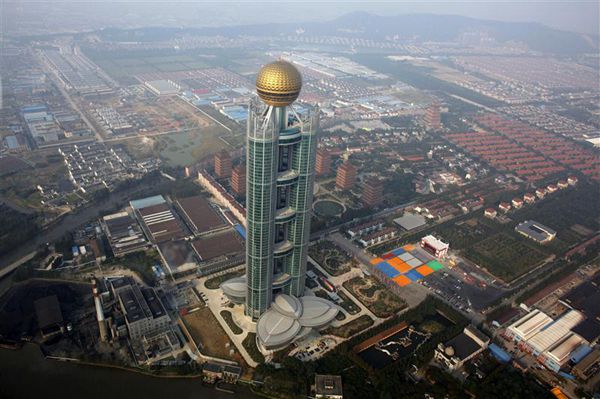Despite its fame as one of the country's model villages for endeavoring to create wealth under the name of collective economy, Huaxi Village in ea

Huaxi Village in Jiangsu Province has been dubbed “the richest village in China.
Despite its fame as one of the country’s model villages for endeavoring to create wealth under the name of collective economy, Huaxi Village in east China’s Jiangsu Province has faced great challenges following the changes in the nation’s economic environment.
In 2015, the decades-long economic pillar — the steel industry — with three major manufacturing bases in Huaxi, reported severe losses. Although the sector resumed substantial profits last year, the village executive body decided it was time to consider replacements.
“Despite the village’s past prosperity highly reliant on traditional industries, the rising land costs and environmental challenges allow us in no way to continue to expand manufacturing industries,” said Wu Xie’en, the Party secretary of Huaxi Village and chairman of the Jiangsu Huaxi Group Corporation.
Following a unanimous vote for him to assume the role of village chief when his legendary father Wu Renbao retired in July 2003, Wu Xie’en initiated diverse business operations, such as logistics in 2003, finance in 2005, ocean freight in 2009, mining in 2011 and wholesale agricultural product development in 2012, in attempts to revive the steel-dominated economy.
By March 2016, the Jiangsu Huaxi Group Corporation owned 186 subsidiaries and three joint ventures, and had 19 business partners.
From 2005 to 2009, Huaxi established a financing guarantee firm, a pawnshop and a financing subsidiary involved in equity investment. Today, the Corporation, parent to a number of investment guarantee institutes, small loan firms, county-level banks and pawnshops, has promoted substantial growth in the financial market.
“The Corporation is expected to be transformed into a service-centered conglomerate. Its access to the financial sector will lay a sound foundation for this transformation and ensure the fattest and fastest rewards,” Wu said.
Operations in the financial sector last year produced revenue of 1.63 billion yuan (US$235 million) and net profit of 607 million yuan. While the revenue was one tenth that of the local steel industry, the net profit was five times greater.
In contrast to the booming financial sector, the shipping industry affiliated to the Corporation has suffered constant losses. In 2009, a year after the outbreak of global financial tsunami that swept the entire shipping industry and resulted in considerable losses, Wu considered it was a good time to purchase cargos and build the industry at home with low costs.
After purchasing five second-hand cargos at low prices, the Corporation began its foray into ocean freight, only to face continuous losses. In 2016, the Corporation reported a net loss of 226 million yuan in the marine engineering sector.
Almost all young people residing in the village find jobs in the Corporation. Their annual income, including corporate dividends, reaches 90,000 yuan per person. In the past, about 20 percent of the dividends were dispersed in cash and 80 percent was retained by the village committee for reinvestment.
However, since the beginning of this year, the dividends have been distributed in full in line with the shares held by each individual. According to Wu, the new policy is to ensure fairness between the local and migrant people when they are working on the same assignments.
The villagers together own 24 percent of the Corporation’s shares, while a portion of shares will possibly be reserved for partners and non-local talents by means of a stimulatory mechanism, as long as the collective economic ownership can be ensured.
china.org.cn

